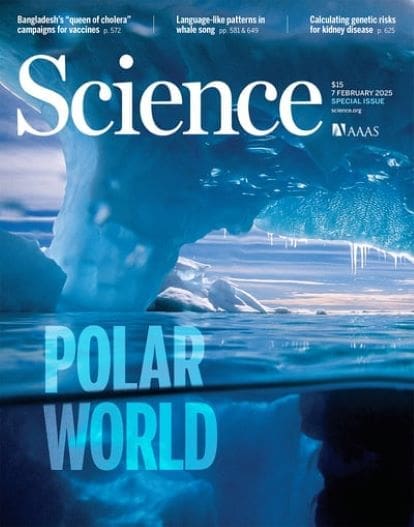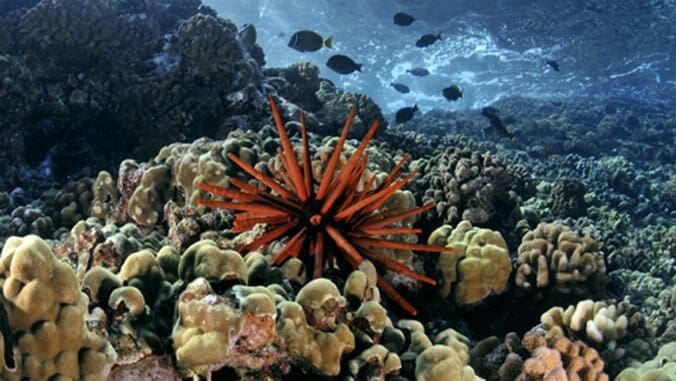Explore the latest insights from top science journals in the Muser Press daily roundup, featuring impactful research on climate change challenges.
In brief:
Stormwater pollution sucked up by specialized sponge
As more waterways contend with algal blooms and pollution caused by minerals from agricultural runoff and industrial manufacturing processes, new methods to remove pollutants like phosphate, copper and zinc are emerging across fields.
While solutions exist, they tend to be costly and can be used just once. But a specialized sponge created by researchers at Northwestern University that works to slurp up pollutants, and then release them as desired, may present a reusable, low-cost solution.
The sponge, coated with nanoparticles that have an affinity for pollutants, can collect metals like zinc and copper, as well as phosphate, and in previous iterations has successfully pulled lead from water, and microplastics and oil from lakes and oceans. It then releases these valuable resources when it is exposed to different pH’s.

In a paper published in the American Chemical Society journal Environmental Science & Technology Water, researchers define a method to tailor their platform to specific Chicago pollutants and then selectively release them, giving resources that typically must be mined a potential for a second life.
“The technology can be used as a universal sorbent or ‘catch-all,’ or it can be tailored to certain groups of contaminants like metals, plastics or nutrients,” said principal investigator Vinayak Dravid.
Dravid is the Abraham Harris Professor of Materials Science and Engineering at Northwestern’s McCormick School of Engineering and a faculty affiliate of the Paula M. Trienens Institute for Sustainability and Energy. He is also the founding director of the Northwestern University Atomic and Nanoscale Characterization (NUANCE) Center as well as the Soft and Hybrid Nanotechnology Experimental (SHyNE) Resource, and also serves as the associate director for global programs at the International Institute of Nanotechnology.
What’s with the sponge?
In its first iteration, the sponge platform was made of polyurethane and coated with a substance that attracted oil and repelled water. The newest version is a highly hydrophilic (water-loving) cellulose sponge coated with particles tailored to other pollutants. The sponge platform works so effectively because of its pores, providing lots of surface area where pollutants can attach.
Dravid has at times referred to the technology as a “Swiss Army knife” thanks to its versatility and ability to be used again and again. He founded NU startup Coral Innovations (formerly MFNS-Tech) to begin the process of commercializing the sponge-based technology for environmental remediation.
A one-two P(h)unch
Stormwater treatment equipment manufacturer StormTrap, LLC learned about the platform and approached the team, asking about three specific pollutants heavily impacting Chicago. Hoping to add absorbent materials to their portfolio, StormTrap representatives asked if Dravid could get the concentration of pollutants down to untraceable amounts.
The Environmental Protection Agency (US EPA) sets levels for minerals based on human health that are at times higher than the amount considered safe from an environmental perspective, typically setting drinking water limits in the parts per million range when preventing algae blooms and other environmental impacts would require much smaller concentrations.
Developing the platform to capture copper, zinc and phosphate was relatively easy, but then, Kelly Matuszewski, a Ph.D. student in the Dravid group and the paper’s first author, was tasked with determining a method to get the resources back. As stores of phosphate and metals in mines are depleted, this second step is becoming critical.
“We can’t just keep flushing these minerals down the toilet,” Matuszewski said. “We need to understand how they interact and find ways to actually utilize them.”
Matuszewski found that by lowering the pH, metals flush out of the sponge. Once copper and zinc are removed, the pH is then raised, at which point phosphate comes off the sponge. She found that even after five cycles of collecting and removing minerals, the sponge worked just as well, and she was able to deliver water with untraceable amounts of pollutants.
Matuszewski is a finalist in the FoundHer Spotlight, a competition for early career women scientists facilitated by Northwestern’s Querrey inQbation Lab. She will pitch on March 5 to the Northwestern Women’s Board, competing against seven other researchers.
Taking it to the storm drains
The partnership with StormTrap, LLC has allowed the team to assess the technology’s effectiveness and move quickly from the lab to the industry. Using the platform in real-life scenarios will be an important next step, as Matuszewski was working in a controlled environment in which each pollutant had the same relative concentration. The next phase will help them determine the amount of minerals a sponge can hold and allow them to partner with other Northwestern researchers working on creating cleaner waterways.
***
The paper was funded by Trienens and StormTrap and is based on work related to The Great Lakes Water Innovation Engine supported by the National Science Foundation (grant number ITE-2315268).
Vinayak Dravid and Northwestern have financial interests (equities, royalties) in Coral Innovations.
Journal Reference:
Kelly E. Matuszewski, Benjamin Shindel, Vikas Nandwana, and Vinayak P. Dravid, ‘Rinse, Recover, Repeat: pH-Assisted Selective Extraction of Phosphate and Metals with a Sponge Nanocomposite’, ACS EST Water (2025). DOI: 10.1021/acsestwater.4c01234
Article Source:
Press Release/Material by Northwestern University
Air pollution clouds the mind and makes everyday tasks challenging
People’s ability to interpret emotions or focus on performing a task is reduced by short-term exposure to particulate matter (PM) air pollution, potentially making everyday activities, such as the weekly supermarket shop, more challenging, a new study reveals.
Scientists discovered that even brief exposure to high concentrations of PM may impair a person’s ability to focus on tasks, avoid distractions, and behave in a socially acceptable manner.
Researchers exposed study participants to either high levels of air pollution – using candle smoke – or clean air, testing cognitive abilities before and four hours after exposure. The tests measured working memory, selective attention, emotion recognition, psychomotor speed, and sustained attention.
Publishing their findings in Nature Communications, researchers from the Universities of Birmingham and Manchester reveal that selective attention and emotion recognition were negatively affected by air pollution – regardless of whether subjects breathed normally or only through their mouths.

The experts suggest that inflammation caused by pollution may be responsible for these deficits noting that while selective attention and emotion recognition were affected, working memory was not. This indicates that some brain functions are more resilient to short-term pollution exposure.
Co-author Dr Thomas Faherty, from the University of Birmingham, commented: “Our study provides compelling evidence that even short-term exposure to particulate matter can have immediate negative effects on brain functions essential for daily activities, such as doing the weekly supermarket shop.”
Co-author Professor Francis Pope, from the University of Birmingham, commented: “Poor air quality undermines intellectual development and worker productivity, with significant societal and economic implications in a high-tech world reliant on cognitive excellence.
“Reduced productivity impacts economic growth, further highlighting the urgent need for stricter air quality regulations and public health measures to combat the harmful effects of pollution on brain health, particularly in highly polluted urban areas.”
Cognitive functioning encompasses a diverse array of mental processes crucial for everyday tasks. Selective attention, for example, helps decision-making and goal-directed behaviour, such as prioritising items on your shopping list in the supermarket, while ignoring other products and resisting impulse buys.
Working memory serves as a temporary workspace for holding and manipulating information, vital for tasks requiring simultaneous processing and storage, essential for tasks that require multitasking, such as planning a schedule or juggling multiple conversations.
Socio-emotional cognition, which involves detecting and interpreting emotions in oneself and others, helps guide socially acceptable behaviour. Although these are separate cognitive skills, they work together to enable the successful completion of tasks both at work in other aspects of life.
Overall, the study highlights the need for further research to understand the pathways through which air pollution affects cognitive functions and to explore the long-term impacts, especially on vulnerable populations like children and older adults.
Co-author Professor Gordon McFiggans, from the University of Manchester, commented: “This study shows the importance of understanding the impacts of air pollution on cognitive function and the need to study the influences of different sources of pollution on brain health in vulnerable older members of society.”
The study is the first to experimentally manipulate inhalation routes of PM air pollution, providing valuable insights into how different pathways affect cognitive functions. Researchers emphasise the need for further investigation into long-term impacts and potential protective measures.
Globally, air pollution is the leading environmental risk factor to human health, increasing premature mortality. The detrimental impacts of poor air quality on cardiovascular and respiratory systems are widely acknowledged, with links to neurodegenerative conditions such as multiple sclerosis, Alzheimer’s disease, and Parkinson’s disease.
PM2.5 is the air pollutant most responsible for human health effects with some 4.2 million deaths attributed to this size of particle alone in 2015. The World Health Organization (WHO) recommends that 24-hour and annual limits are below 15 μg m‑3 and 5 μg m‑3 respectively.
Journal Reference:
Faherty, T., Raymond, J.E., McFiggans, G. et al. ‘Acute particulate matter exposure diminishes executive cognitive functioning after four hours regardless of inhalation pathway’, Nature Communications 16, 1339 (2025). DOI: 10.1038/s41467-025-56508-3
Article Source:
Press Release/Material by University of Birmingham
Science, Special Issue: The cryosphere
In this Special Issue of Science, three Reviews and a Policy Forum highlight research on Earth’s frozen places – from the Arctic to the Antarctic – and how it’s changing due to climate change and the geopolitical challenges this important work faces.

In the first Review1, Julienne Stroeve and colleagues provide a preview of what the Arctic region may look like in a warmer world. Without stronger climate action, global temperatures are set to rise +2.7°C above preindustrial levels, causing irreversible Arctic transformation. Under this future, Stroeve et al. show that nearly all days in the region would exceed past temperature extremes, summers would see an ice-free Arctic Ocean, Greenland’s melt zones would quadruple, and permafrost would shrink by half.
While these changes would severely disrupt ecosystems, and damage Arctic communities and infrastructure, the authors note that stronger climate action could significantly mitigate these consequences, preserving the Arctic’s stability and resilience.
In a second Review2, Helen Fricker and colleagues focus on Antarctic ice, which plays a crucial role in regulating Earth’s climate, global sea levels, ocean circulation, and planetary reflectivity. Fricker et al. highlight key knowledge gaps in these processes, which create uncertainties in the stability of the Antarctic ice sheet and the potential impacts of its continued loss. According to Fricker et al., progress in these areas depends on high-resolution satellite monitoring, targeted field studies, improved modeling, and strengthened interdisciplinary collaboration to reduce uncertainties and refine future projections.
A third Review3 focuses on Antarctic biodiversity. According to Luis Pertierra and colleagues, Antarctica hosts myriad unique life forms, yet much of the region’s biodiversity and ecological functioning remains poorly understood. Outside of a few well-known vertebrate species, much about the region’s invertebrate, plant, and microbial life remains unknown.
Here, Pertierra et al. highlight the shortfalls in Antarctic biodiversity research, explain how these gaps hinder ecological insight and conservation in the region, and offer a framework for addressing them.
Lastly, in a Policy Forum4, Jennifer Spence and colleagues discuss the geopolitical challenges facing Arctic research. The Arctic is at the forefront of critical global issues, including the uneven impacts of climate change, the challenge of balancing economic development with conservation, and the complexity of governance across multiple boundaries. These issues are complicated further by rising populism, geopolitical tensions, and distrust in governmental institutions.
Spence et al. highlight three key issues, including understanding the regional and global effects of climate change, ensuring research benefits Arctic communities, and maintaining international cooperation in the face of growing geopolitical pressures. However, despite these challenges, the Arctic region has pioneered innovative governance models that prioritize Indigenous engagement, as well as fostering international cooperation through institutions like the Arctic Council to promote sustainable development and environmental protection.
Journal References:
1. Julienne C. Stroeve et al., ‘Disappearing landscapes: The Arctic at +2.7°C global warming’, Science 387, 616-621(2025). DOI: 10.1126/science.ads1549
2. Helen Amanda Fricker et al., ‘Antarctica in 2025: Drivers of deep uncertainty in projected ice loss’, Science 387, 601-609 (2025). DOI: 10.1126/science.adt9619
3. L. R. Pertierra et al., ‘Advances and shortfalls in knowledge of Antarctic terrestrial and freshwater biodiversity’, Science 387, 609-615 (2025). DOI: 10.1126/science.adk2118
4. Jennifer Spence et al., ‘Arctic research cooperation in a turbulent world’, Science 387, 598-600 (2025). DOI: 10.1126/science.adr7939
Introduction to Special Issue:
Jesse Smith, Bianca Lopez, and Brad Wible, ‘Extreme Conditions’, Science 387, 588-589 (2025). DOI: 10.1126/science.adw2518
Article Source:
Press Release/Material by Walter Beckwith | American Association for the Advancement of Science (AAAS)
New technology lights way for accelerating coral reef restoration
Scientists have developed a novel tool designed to protect and conserve coral reefs by providing them with an abundance of feeding opportunities.
The device, dubbed the Underwater Zooplankton Enhancement Light Array (UZELA), is an autonomous, programmable underwater light that works to draw in nearby zooplankton, microscopic organisms that coral feed on.
After testing the submersible on two species of coral native to Hawaii over six months, researchers found that UZELA could greatly enhance local zooplankton density and increase the feeding rates of both healthy and bleached coral. Importantly, providing coral with greater amounts of food makes them stronger and more likely to be resilient against certain environmental threats, like heat stress or ocean acidification.
This result is impressive, especially at a time when rising ocean temperatures are forcing entire coral reefs to the cusp of collapse, said Andrea Grottoli, lead author of the study and a professor of earth sciences at The Ohio State University.

“Coral reefs house one-third of all marine species, yet occupy less than 1% of the ocean,” she said. “They are disproportionately responsible for ocean health and we’re at risk of losing them.”
The study was recently published in the journal Limnology and Oceanography: Methods.
Millions of humans rely on coral reefs, as they support fishing industries and protect coastline communities from dangers like erosion and floods. Unfortunately, many climate models project that at Earth’s current rate of warming, these vital coral reefs may be completely devastated by 2050, jeopardizing the complex ecosystems they sustain.
Although the technology in this study is only a short-term solution to the environmental threats that coral reefs face, the device will likely be very beneficial to coral restoration efforts, said Grottoli. “Think of it as a band-aid for about a couple decades,” she said. “It can protect some corals in some places, sometimes.”
The team also found that UZELA, which can be powered for half a year on a single battery, could optimize a coral’s feeding time by operating for just one hour after dusk.
Understandably, artificial lights can disrupt the behavior of other marine animals, so researchers could choose not to use the device year-round. That said, the study emphasizes that corralling zooplankton with this human-made tool doesn’t seem to harm the environment or interrupt the flow of other zooplankton in the surrounding area.
“If you imagine zooplankton in a column floating above coral, instead of being naturally dispersed, UZELA is just pulling them down, but it’s not taking away from the coral beside it,” said Grottoli. “We show that if you put the coral close to the light, they benefit from that concentrated zooplankton, and feeding rates go up 10- to 50-fold.”
This number is equivalent to an 18-68% increase in the amount of metabolic demand that can be met by zooplankton alone, meaning that increased feeding helps supplement a large part of the coral’s diet, which successfully leads to an increase in coral survivorship and persistence.
“The real intent of this project is to inject new technology and energy into coral restoration success,” Grottoli said. “It’s something that can be deployed strategically for high-value reefs, or projects that have already had a lot of investment in them.”
Widely adaptable to various marine environments, UZELA can also easily be serviced by divers once placed in optimal underwater locations.
Notably, while the current generation of UZELAs are handmade, the team is working with an Ohio-based engineering company to redesign the technology to make it more manufacturable. Grottoli expects these more enhanced versions will be available within the next one to three years.
“We are not mitigating climate change fast enough to save coral, and UZELA is not going to instantly save coral reefs,” she said. “But it is an exciting solution that will buy us time as we work toward a more sustainable environment.”
Other co-authors include Shannon Dixon and Ann Marie Hulver from Ohio State as well as Claire Bardin, Claire Lewis, Christopher Suchocki and Rob Toonen from the University of Hawai’i at Manoa and the Hawaii Institute of Marine Biology.
***
The study was supported by the University of Hawai’i Foundation, the National Science Foundation and the Defense Advanced Research Projects Agency.
Journal Reference:
Grottoli, A.G., Dixon, S.L., Hulver, A.M., Bardin, C.E., Lewis, C.J., Suchocki, C.R., and Toonen, R.J., ‘Underwater Zooplankton Enhancement Light Array (UZELA): A technology solution to enhance zooplankton abundance and coral feeding in bleached and non-bleached corals’, Limnology and Oceanography Methods online (2025). DOI: 10.1002/lom3.10669
Article Source:
Press Release/Material by Tatyana Woodall | Ohio State University
Featured image credit: Gerd Altmann | Pixabay




